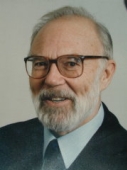Decision Making under Uncertainty
Decision Making under Uncertainty
Principal investigators

Abstract
Decision making under uncertainty has two major facets:
• A descriptive science, answering questions like “how do people make decisions when facing uncertainty?”, and “how do people understand uncertainty in general?” This type of research is mostly covered by behavioural psychologist, but also organizational psychologists and other social scientists focusing on organizations.
• A normative science, focusing on how to find optimal decisions under uncertainty, given a certain set of premises for the decisions. On a theoretical level, this is covered, for example, by economists using utility theory. When looking for actual decisions in real contexts, we may need to turn to other fields, such as decision theory and operations research.
Some approaches/theories certainly contain mixtures of the two. For example, the theory of satisfiability (the “administrative man”) by Nobel laureate Herbert A. Simon is a decision theory based on an alternative theory of how decisions are being made.
The theories of how decisions are being made and how uncertainty is understood have many practical uses already. This is particularly true for marketing (including the marketing of political agendas) and many types of data collection and polling. In some of these cases the issue is to utilize to your own advantage the systematic errors made by most people when relating to uncertainty, in other cases the issue is to offset the errors so as to obtain unbiased estimates.
A major controversy among specialists of decision theory is the usefulness of complex quantitative decision tools. The controversy relates to both the usefulness of such tools, and to the questions of whether or not they are actually being used. The disagreement rests partly on observations of the success in models that have been made (or lack thereof), partly on the psychological research on how models are being used and understood (as referred to above), and partly on folklore with no scientific basis.
This project subscribed to the view that in many contexts of both strategy and production, quantitative decision tools are being and should be used. Hence, the premise here is that in some contexts models are useful, and the issue is: What makes a model good? The simple answer is that a model is good if it facilitates good decisions. This may sound like a tautology, but it is not. It means, among other things, that we do not measure models by their likeness to what we model, but rather to their usefulness for decisions.
However, this project is not named “quantitative decision tools”, but rather focuses on the uncertainty aspect of decision-making. This is because few, if any, decisions are made under certainty, and because popular tools such as sensitivity analysis and what-if-analysis are not valid tools for decision making under uncertainty.
A major focus of this project was therefore on aspects that can make a decision model, which explicitly contains uncertainty good.
Fellows




Jan Martin Hovden

